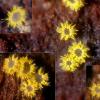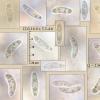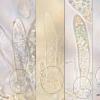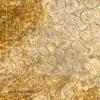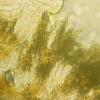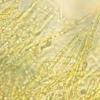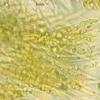
29-08-2012 18:47
Hi to allThese small and narrowly sessile ascomata

31-07-2012 17:17
 Alex Akulov
Alex Akulov
Dear FriendsCan you help me with the identificatio

20-08-2012 21:31
 Bernard Declercq
Bernard Declercq
Hi,A friend of mine sent me a collection on decort

27-08-2012 11:48
 Alessio Pierotti
Alessio Pierotti
According Mycobank some Polystigma, such as P. tru

26-08-2012 20:46
 Nicolas VAN VOOREN
Nicolas VAN VOOREN
Bonjour.Trouvé dans un ruisseau, sur bois mort à

20-04-2012 18:26
Gernot FriebesHi, I have never found E. cerviculata so I would a

22-08-2012 23:01
 Bometon Javier
Bometon Javier
Fructificaciones de aproximadamente 10mm, un poc

22-08-2012 15:52
Bonjour, Dans des tiges de Typha angustifolia, au
Amicodisca sp. with asci with croziers
Enrique Rubio,
29-08-2012 18:47
These small and narrowly sessile ascomata up to 400 microns grew on Betula alba wood at 1650 m of altitude. KOH negative.
I think is an Amicodisca species but their asci have persistentely croziers.
What's your opinion?
Many thanks again
Chris Yeates,
29-08-2012 20:50

Re : Amicodisca sp. with asci with no croziers
Hello Enrique
I do not know this genus (I wish I did!) but looking at Zotto's DVD not having croziers seems to be quite typical of it
best wishes
Chris
I do not know this genus (I wish I did!) but looking at Zotto's DVD not having croziers seems to be quite typical of it
best wishes
Chris
Enrique Rubio,
29-08-2012 21:01
Re : Amicodisca sp. with asci with croziers
Thank you, Chris. I'm sorry but I was wrong and wrote that the asci have not croziers (typical for Amicodisca) when my collection has asci WITH CROZIERS !
Enrique
Enrique
Hans-Otto Baral,
29-08-2012 21:18

Re : Amicodisca sp. with asci with croziers
Dear Enrique
I believe this is very similar to A. virella, mainly differing in croziers and slightly smaller spores.
There is a key in a recent Japanese paper (Han et al. 2012), but it does not include your species. I send you the pdf.
Probably undescribed!
Zotto
I believe this is very similar to A. virella, mainly differing in croziers and slightly smaller spores.
There is a key in a recent Japanese paper (Han et al. 2012), but it does not include your species. I send you the pdf.
Probably undescribed!
Zotto
Björn Wergen,
30-08-2012 00:21

Re : Amicodisca sp. with asci with croziers
Hi
Zotto, can you send it to me too? I am interested in this genus. Nice finding, Enrique.
regards,
björn
Zotto, can you send it to me too? I am interested in this genus. Nice finding, Enrique.
regards,
björn
Guy Garcia,
30-08-2012 07:51
Re : Amicodisca sp. with asci with croziers
Enrique Rubio,
30-08-2012 13:52
Re : Amicodisca sp. with asci with croziers
Thanks a lot, Zotto.
I think could be an undescribed species of Amicodisca but the question is: Which is the importance of having or not having croziersr to differentiate two species ?
Enrique
Thanks for the paper
I think could be an undescribed species of Amicodisca but the question is: Which is the importance of having or not having croziersr to differentiate two species ?
Enrique
Thanks for the paper
Hans-Otto Baral,
30-08-2012 22:28

Re : Amicodisca sp. with asci with croziers
This is actually not always clear. It depends on the case. But generally the difference in the ascus base seems to have to do with a specific split of populations which do not further interbreed. If you find other distinguishing features it is easier to make such a distinction. But in the case of H. albidus/pseudoalbidus we have only slight correlations in other features of the apothecia. But we have strong pathogenic differences, and also such in the anamorph. Who knows what Amicodisca does in pure culture...
Zotto
Zotto
Enrique Rubio,
31-08-2012 12:33
Re : Amicodisca sp. with asci with croziers
Thanks!
What little we know still!
What little we know still!

